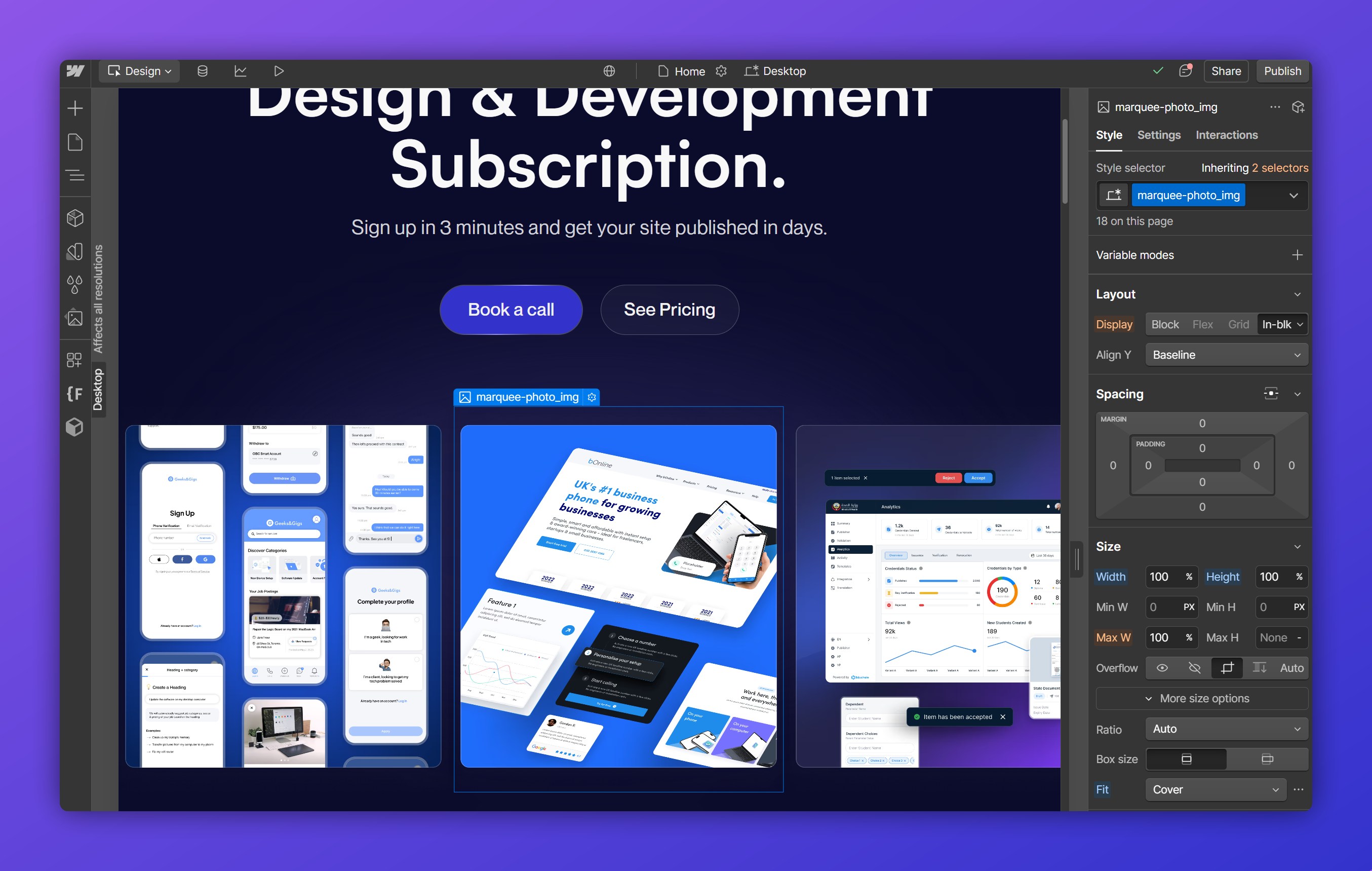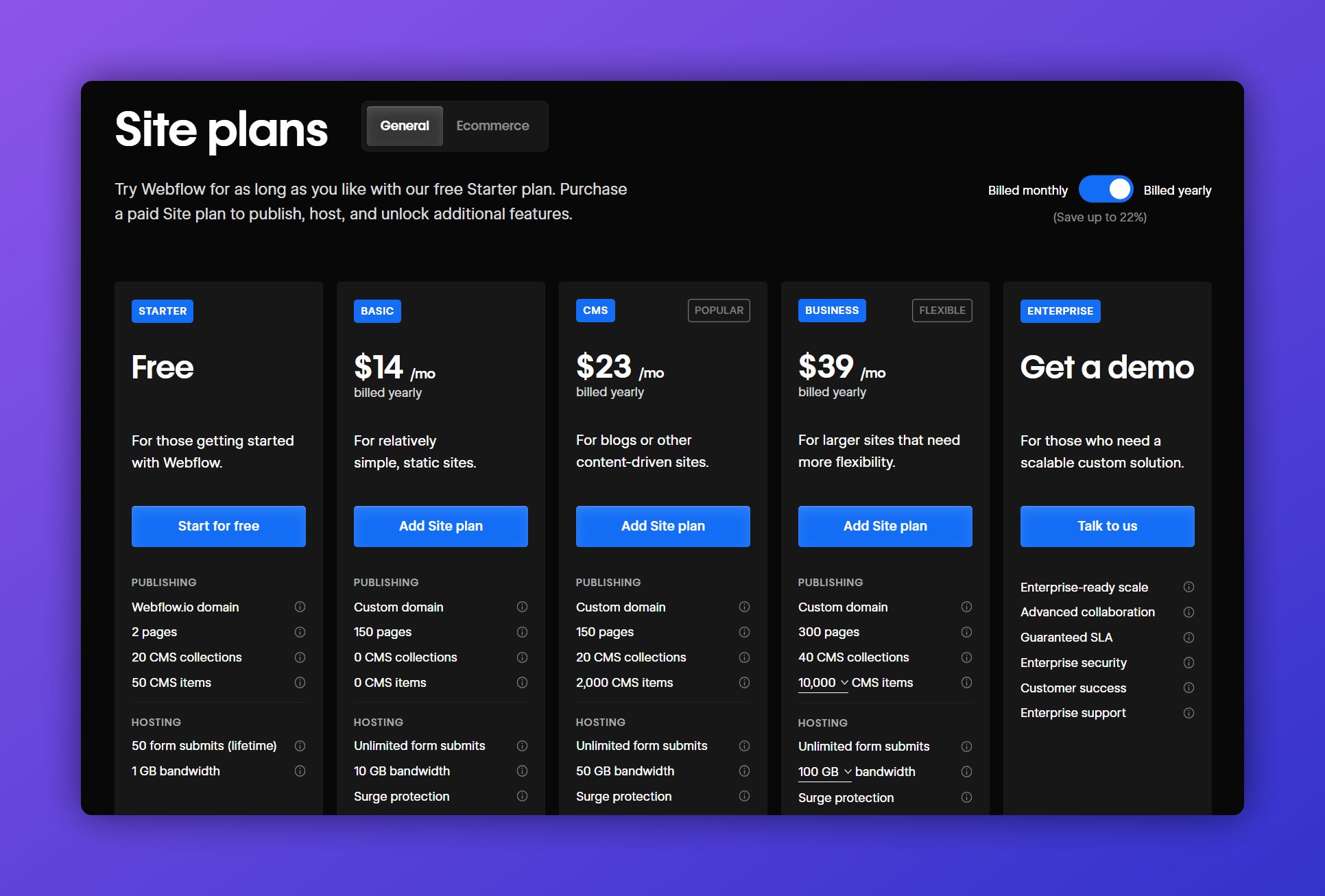TL;DR
Duda and Webflow are both capable website builders, each catering to different user needs.
Duda: Ideal for users seeking a user-friendly platform with rapid deployment capabilities and integrated client management tools. It offers a range of pre-designed templates and focuses on mobile optimization. However, it has limited design flexibility and customization options.
Webflow: Suited for designers and developers desiring full creative control and advanced customization. It provides a powerful visual editor, integrated CMS, and extensive design capabilities.
The platform has a steeper learning curve and may involve higher costs for advanced features.
Duda and Webflow are two of the most prominent website-building platforms available today. Each offers distinct advantages, catering to different user needs—from agencies and freelancers to developers and designers.
This article provides a comprehensive comparison of Duda and Webflow, analyzing their features, ease of use, customization capabilities, SEO options, pricing, and support. By the end, you'll have a clearer understanding of which platform best suits your needs.
Overview of Duda
Purpose and Functionality
Duda is a user-friendly no-code website builder designed primarily for agencies, freelancers, and businesses that require efficient website creation. With a strong focus on mobile responsiveness, Duda enables users to quickly deploy professional websites without extensive technical expertise.

Key Features
- Drag-and-drop editor for easy site creation.
- Pre-designed templates for various industries.
- Client management tools to streamline collaboration.
- Team collaboration functionalities for workflow efficiency.
- Built-in SEO optimization for search engine visibility.
Pros and Cons
Pros:
- Intuitive and easy to use.
- Rapid website deployment.
- Integrated client management.
- Strong mobile optimization.
Cons:
- Limited design flexibility compared to Webflow.
- Fewer customization options for advanced users.
Overview of Webflow
Purpose and Functionality
Webflow is a powerful web design and development platform that provides designers and developers with full creative control. Unlike traditional drag-and-drop builders, Webflow combines a visual editor with advanced coding capabilities, making it a preferred choice for professionals who demand intricate customization.

Key Features
- Advanced visual editor for pixel-perfect designs.
- Integrated CMS for dynamic content management.
- Extensive design flexibility with CSS and HTML controls.
- Responsive design tools for cross-device compatibility.
- Robust hosting services for high performance and security.
Pros and Cons
Pros:
- High level of design customization.
- Clean code generation for optimal site performance.
- Advanced CMS capabilities for dynamic content.
- Scalability for complex projects.
Cons:
- Steeper learning curve for beginners.
- Potentially higher costs for advanced features.
Want a Webflow website that’s optimized for performance, CRO and SEO? Nexus Creative specializes in high-converting Webflow design and development, let’s chat!
Ease of Use
Duda
Duda offers an intuitive drag-and-drop interface, making it an excellent choice for non-technical users. Its streamlined workflow is particularly beneficial for agencies and businesses needing rapid site deployment without extensive training.
Webflow
While Webflow provides a powerful design interface, it comes with a learning curve. Users unfamiliar with web design principles may need time to grasp its functionalities. However, once mastered, Webflow allows for unparalleled design freedom and precision.
Design and Customization
Duda
Duda provides a variety of pre-designed templates, allowing users to customize layouts within set frameworks. However, design flexibility is somewhat limited, making it a better fit for those prioritizing efficiency over deep customization.
Webflow
Webflow excels in design capabilities, offering advanced customization through animations, interactions, and fully responsive layouts. It's the ideal choice for designers looking to create unique and highly detailed websites from scratch.
SEO Capabilities
Duda
Duda includes built-in SEO tools, such as meta tags, alt text, and URL customization. While sufficient for standard SEO needs, it lacks some of the advanced options preferred by SEO professionals.
Webflow
Webflow provides comprehensive SEO features, including customizable meta tags, automatic sitemap generation, and clean semantic code with structured data (schema) capabilities. These features offer greater flexibility for implementing advanced SEO strategies.
Pricing
Duda

- Plans start at $19 per month.
- Pricing scales based on features and the number of websites.
- Additional costs may apply for premium templates and add-ons.
Webflow

- Basic plan starts at $14 per month.
- Higher-tier plans offer enhanced features such as CMS capabilities and increased traffic limits.
- Additional expenses may include hosting, custom domain integration, and premium templates.
Support and Community
Duda
Email support, knowledge base, and community forums.
Some limitations on live support availability and response times.
Webflow
Email support, extensive documentation, tutorials, and a VERY active user community.
Cloneables is a massive win for Webflow, allowing you to copy/paste complex animations, components and sections or whole pages from other members in the community.
Additional resources such as webinars and forums for engagement and learning.
Conclusion
Both Duda and Webflow are highly capable website builders, but they serve different purposes:
Duda is ideal for users looking for a user-friendly platform with quick deployment capabilities and integrated client management tools.
Webflow caters to designers and developers who require full creative control, advanced customization, and scalability for complex projects.
Ultimately, the best choice depends on your specific needs, technical expertise, and budget. Assess your priorities to determine which platform aligns best with your website development goals.
Additional Resources
- Duda Official Site: https://www.duda.co
- Webflow Official Site: https://www.webflow.com














